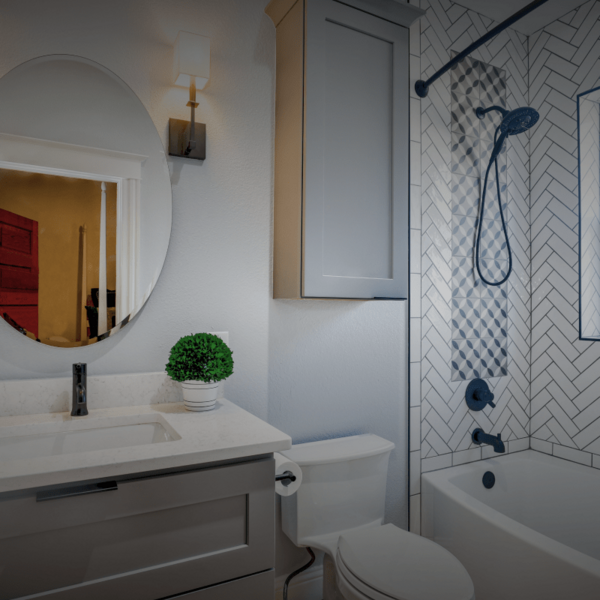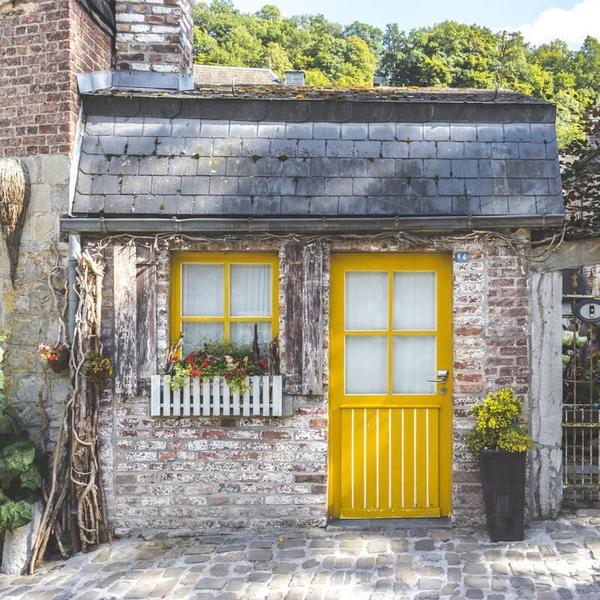Depending on where you live, you’ll want to spend the winter in your tiny home feeling warm and cozy. Without proper research, you could end up with ice cold feet or wasting precious energy opening windows in an overheated small space.
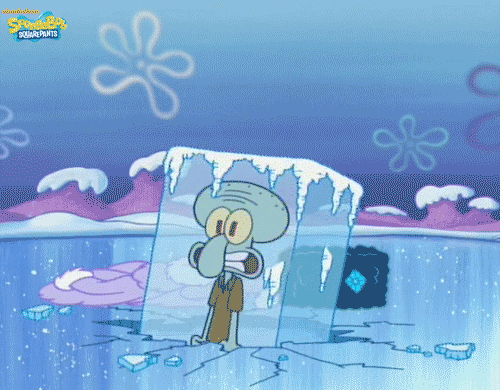
This is why choosing the correctly sized heater for your tiny house is so important. Let’s take a look at some recommendations and tips for staying toasty (and smart!) in your tiny home living space this winter.
First, you need to calculate how many BTUs your tiny home will need to regulate the temperature in a manner that is both efficient and comfortable. British Thermal Units are the approximate amount of energy it takes to heat one pound of water by one degree Fahrenheit. Use this calculator to help determine the number of BTUs based on the dimensions of your space, insulation conditions, and desired daily temperature changes.
Next, we will go over the different types of tiny house heating systems to help you find out which option is best for your lifestyle so you don’t end up freezing on those cold nights.
Grid Tied Heat
Intended for the permanent or semi-permanent location for your tiny house with a grid-tied source that provides reliable electricity. In other words, you aren’t moving anytime soon with these heat systems!
Mini Split Pumps
These are sleek, fairly compact units that are mounted inside the home with a compressor that is mounted outside in order for it to work. The fan from the heat pump system blows air throughout the room, effectively cooling or heating the space.
Pros:
- Ideal because you have the option of both heating and cooling.
- This type of heat is energy efficient
- Quiet
Cons:
- When the daily temperature drops below zero, some units struggle with generating heat
- Can be pricier than other heating options
- Can’t be covered up if it doesn’t fit the house design aesthetic of your tiny home
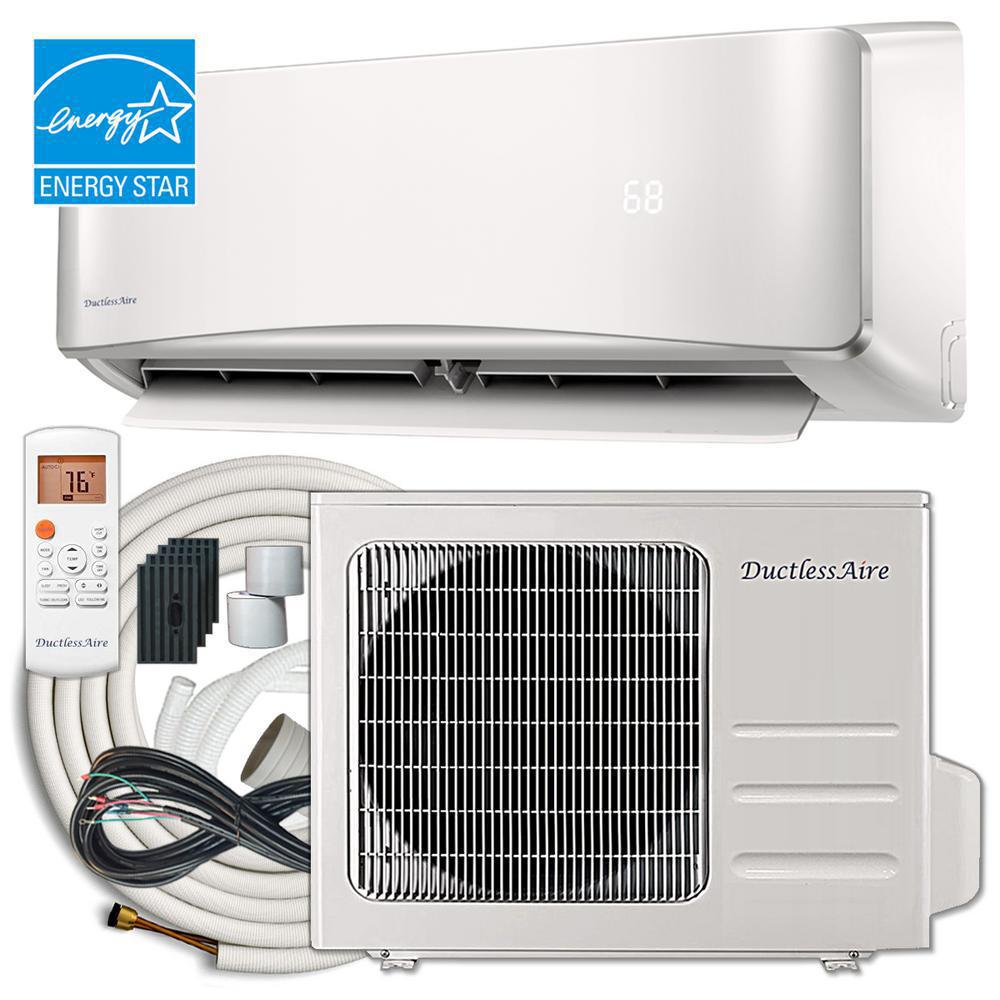
Source: Home Depot
Price: around $2,000
Electric Heater
It’s incredible to see the way in which people have invented ways to make technology look good. Electric heaters today are an example of that. Today, you can purchase a good ‘ol plug-in electric heater that looks like a rustic stove.
Pros:
- Newer models look great, and can fit a rustic or stylish house design aesthetic
- Affordable
- Silent & simple to set up
Cons:
- Electric heat is more expensive
- Smaller units can take longer to heat up a tiny house in extremely cold temperatures
- Keep in mind, some plug-in models get hot on the surface and can burn small hands!
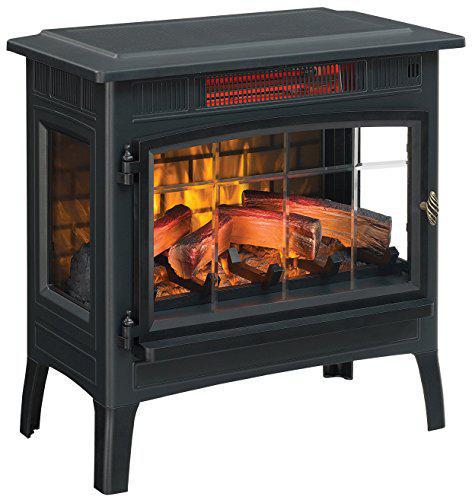
Source: The Spruce
Price: avg. $160
Radiant Floor Heating
Under the floor heating, more traditionally seen in bathrooms, is now becoming more popular in the main rooms of modern houses. But is it worth the extra cost? It’s up to you to decide if the set-up and price is worth the toasty toes from your radiant heater, as well as the energy savings.
Pros:
- Consumes less energy, is more cost-efficient
- The temperature is easy to control for your entire space
- Takes up less floor space
Cons:
- Installation cost for any square footage
- Certain types of flooring are more effective for radiant floor heating (i.e. tile)
- A minimum floor height is required to install systems
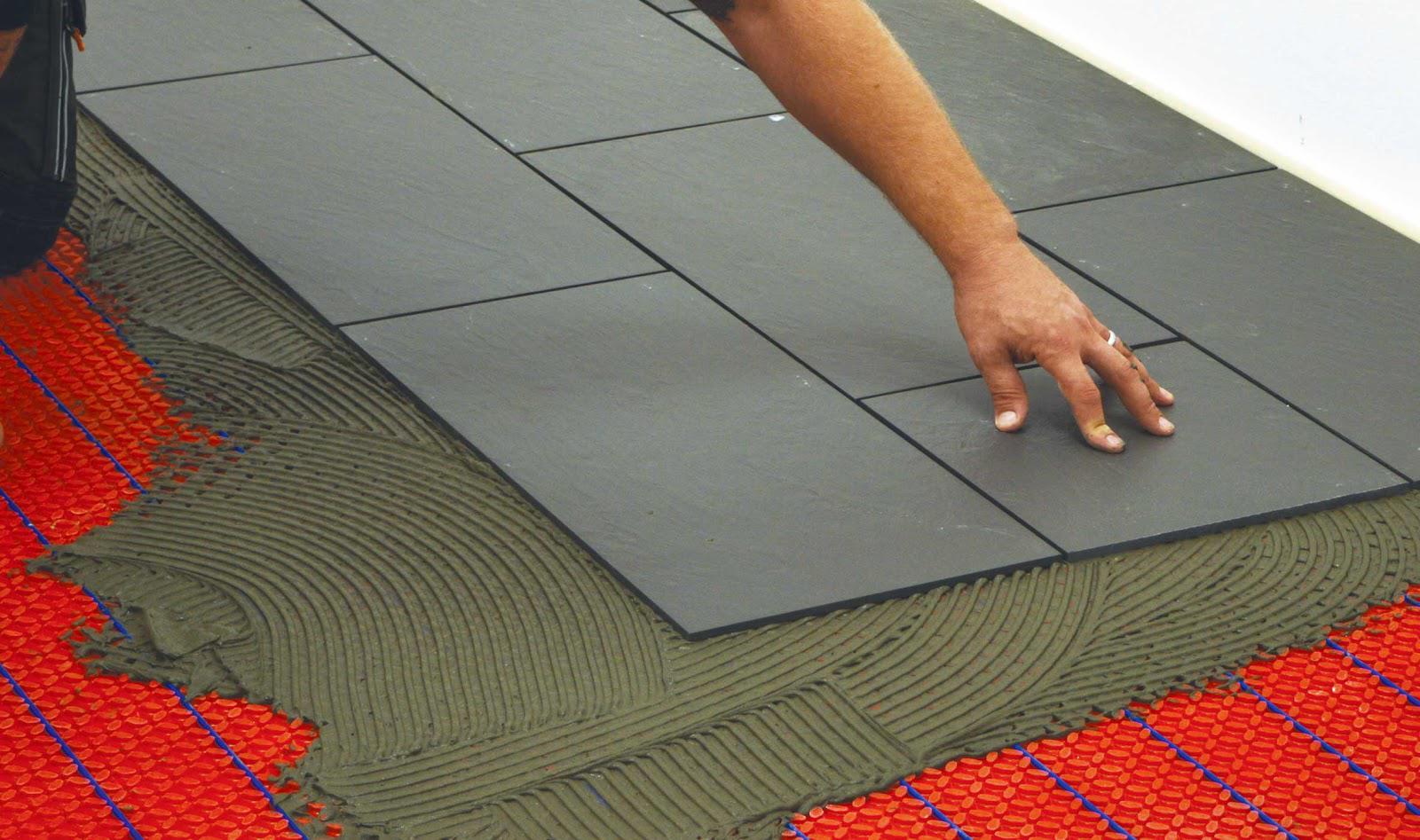
Source: Warmup
Price: avg. $10-20 per square foot / $200-$250 installation fee
Off-Grid Heat
Itching to get on the road? With this type of heat, you and your tiny home are not bound to one location. Some of the more popular methods of heating your off-grid tiny house are by using energy generated by solar, wood or propane.
Solar Power
Exploring alternative solutions and off-grid tiny homes? Solar energy and anything environmentally friendly is pretty popular nowadays. Like many trends, solar power is also fairly pricey. If you decide to shell out the cash for getting a solar array, we salute you! Before we continue, a key thing to understand is the difference between active and passive solar heating.
Active solar heating uses additional equipment (backup systems) to store and convert solar energy into electricity.
Passive solar heating creates heat without external systems and generally relies on windows to capture and retain heat (i.e. a greenhouse).
Solar Air Heater
An active solar heating option, this system relies on the collection of solar energy that heats air which is then circulated through the room.
Pros:
- Eco-friendly heating element
- Cuts the cost of energy bills
Cons:
- Expensive for the heat output you get
- Relies on sunlight (bear in mind if you have long winter months)
- Unless you’re a professional, you might want some installation assistance!
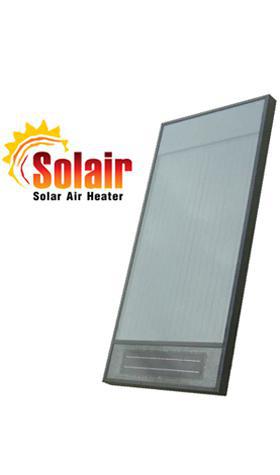
Source: Electrofix Group
Price: around $,1000-$6,000, dependent on size
Propane Heat
For this type of heating system, it’s important to understand the difference between direct-vent and non-vented units. Non-vented units have no direct connection to outside and are said to create vapors that give off a funny smell. Let’s stay away from those.
Direct-vent propane heating system
This system is compact and all fumes from the heating source are piped directly to the exterior of your tiny house. While you won’t have to worry about fumes, you will have to make sure your pipes meet clearance specifications on the road.
Pros:
- Can fit a stylish design aesthetic
- Controllable source of heat
- Durable & quiet
Cons:
- Propane heaters can be pricey
- You’ll need to carry multiple propane tanks onboard
- This type of heater is not the most sustainable option as a primary heat source
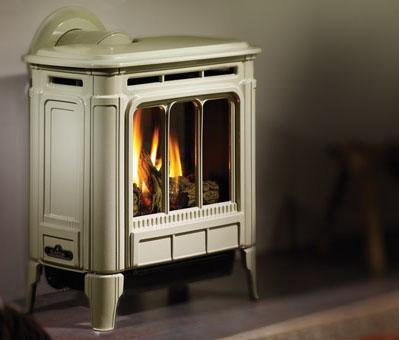
Source: Kirkland Heating
Price: around $4,000
Firewood Heat
Figuring out what size wood stove you need is extra important because you don’t want to take up unnecessary space in your tiny house. With a real fire in your home, you will also want to take necessary precautions to ensure that your wood stove is secured to the floor, as well as that there is a safe perimeter around the unit.
Pros:
- Real fire (you can’t beat the wonderful smell and feel!)
- Can be compact but still pack a ton of heat
- Great design quality and many options for heating
Cons:
- Real fire (take extra precaution!)
- You’ll need to create additional space to carry your firewood
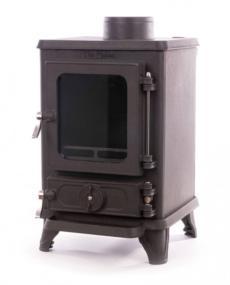
Source: The Stove Yard
Price: around $600
Geothermal Heating Pumps
This is an electrically powered heating and cooling system that sends heat between your tiny house and the ground through long loops of underground pipework. Although extremely efficient, you won’t see too many of these around because they are quite expensive to install (and also underground).
Pros:
- Greatly reduces greenhouse gas emissions
- Cuts cooling and heating costs
- Not a lot of maintenance required
Cons:
- The hefty price tag
- Involves digging of the land
- You’ll need a specialist to install
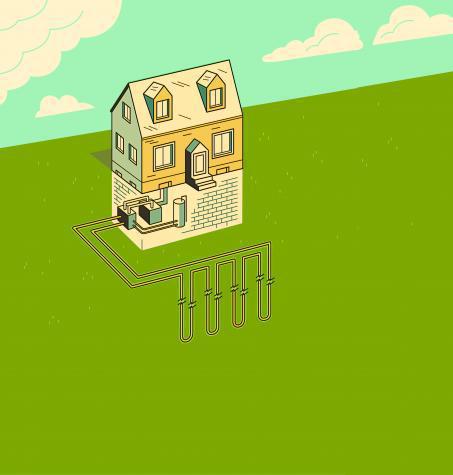
Source: This Old House
Price: avg. $15,000 - $20,000
The Takeaway
You might be reading this and thinking, how do I choose when there are so many options? You’re not alone. Remember, the best tiny house heating option is the one which suits your individual home and personal needs. For example, an individual with access to grid-tied power might choose to have the more eco-friendly, off-grid option.
Consider these questions before you go:
- How many BTUs does my tiny house heating system need where I will be living or traveling?
- Will I be needing off-grid or grid-tied power?
- Will I work from home or will I be away during the day?
- Do I have access to sources of fuel (i.e. wood, propane, etc.)
- Am I willing to pay more for alternative energy?
-Am I on wheels or on fixed foundations?
At the end of the day, many tiny house enthusiasts support a mindful way of living–this is particularly true when it comes to the energy consumption. However, if the most cost-efficient option is your goal, then choose what best works for you and your lifestyle. Remember, the power is in your hands!

